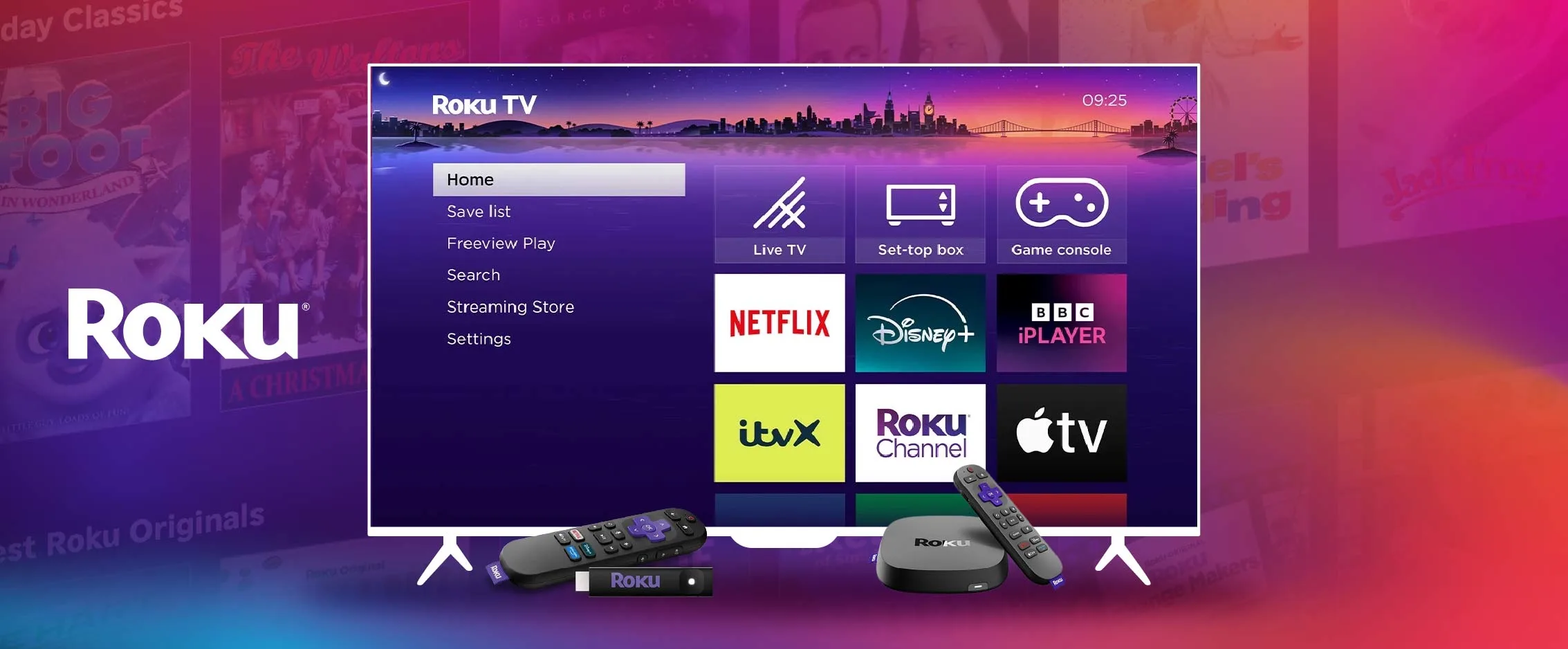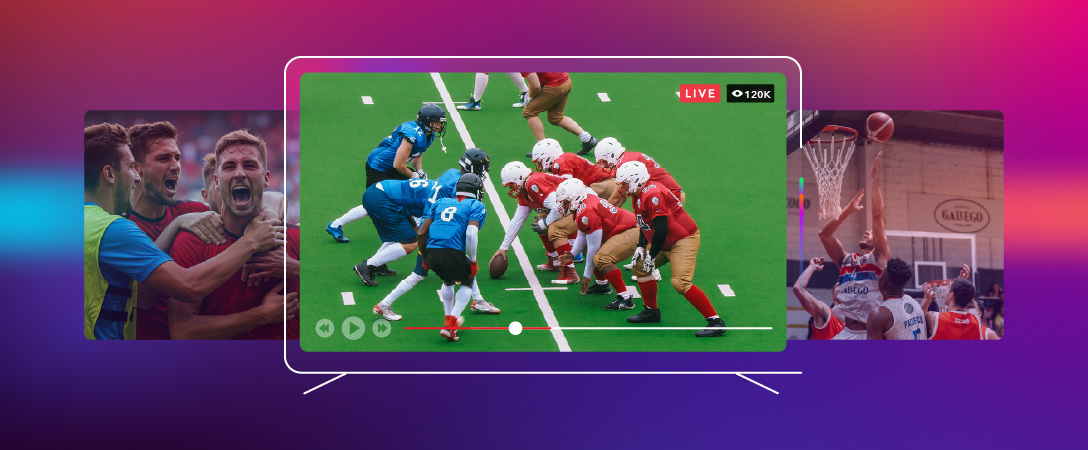With easy access anywhere at any time, streaming content over the internet has never been easier. That’s why OTT streaming is the default media consumption method for many people these days.
As a media publisher, it’s possible to tap into this demand by making your content available on a streaming app or website. The first step to making that happen is configuring the right tech stack, and OTT video players serve a critical role in that process.
In this article, we will discuss all things related to OTT video players. We’ll cover the basics of OTT video players before comparing some top providers to help you choose the right one for your streaming needs.
OTT video players: the basics
OTT video players are the gateway between media publishers and their audience. They are the visual windows that play streaming media over the internet.
If you’ve ever watched a show on Netflix or a video on YouTube, you’ve interacted with an OTT video player. In fact, OTT video players are so commonplace in our digital world that you likely interact with them daily without thinking twice.
What is OTT streaming?
If you’re not familiar, OTT stands for “over-the-top.” OTT streaming is a media distribution method that uses the Internet to go “over” traditional media distribution methods, like cable or satellite.
OTT provider vs. OTT streaming service
There tends to be confusion between OTT providers and OTT streaming services.
An OTT provider is a B2B company that provides OTT video players to media distributors to bring content to their streaming sites and apps. Some OTT providers also offer end-to-end solutions that include all the necessary tools to bring OTT streaming experiences to life, such as analytics, video website building, and more.
On the other hand, an OTT streaming service is a B2C offer that gives viewers access to the media they want to watch. From a consumer’s perspective, an OTT streaming service is the only thing that matters.
Some popular OTT streaming services include Netflix, HBO Max, Hulu, and Disney+. Often times, these sort of services use the support of OTT providers to bring their streaming experiences to life if they do not have the resources to build the experience in-house.

How do OTT video players work?
Video players are equipped with responsive technology to facilitate two-way communication between the consumer and the provider. Video protocols carry signals to and from the video player over the internet.
Thanks to this technology, the player takes the instructed action when viewers click “play,” “pause,” and other buttons throughout the interface.
Different protocols are better suited to different use cases since some industries have unique requirements. However, some examples of popular streaming protocols include WebRTC, HESP, MPEG-DASH, and HLS.
Top OTT streaming use cases
OTT video players are valuable in many industries, including entertainment, sports, and more. Let’s explore these and other OTT streaming use cases.
Entertainment
The number one use case for OTT streaming is entertainment. This includes on-demand content like series, specials, and films, as well as live content, like concerts, parades, or award shows.
Sports
Sports content, which ranges from pay-per-view sporting events to regularly programmed sports broadcasts, is also a significant use case for OTT streaming.
Live sports betting and iGaming are two other OTT use cases under the sporting umbrella. Interactivity is non-negotiable for these two use cases, so they have more advanced technical requirements. They require ultra-low latency, whereas other sports streaming use cases do not.
News
Another popular OTT streaming use case is news streaming. Broadcasters can leverage OTT technology to host linear streams to mimic traditional news channels, a regularly recurring news program, or even sporadic news specials.
Sales and marketing
Thanks to the growth of live commerce, there are also some sales and marketing use cases for OTT streaming. Businesses use live streams to sell items in QVC-style programs.
Live auctioning is also a popular sales use case. Like iGaming and sports betting, live auctioning requires real-time streaming because it heavily involves the audience. Streaming with imperceptible latency is especially important for hybrid auctions because all interested buyers should have an equal opportunity to bid on items they want.

How to choose the right OTT video player
When comparing OTT video players, there are several features and qualities to remember. Here are some top considerations as you choose the best provider for your streaming needs.
Functionality
Although many are very similar, each OTT provider is slightly different in functionality.
Map out which features you need and use this as a guide to determine which providers could be an option for you.
For example, most modern OTT platforms support both live and on-demand streaming; however, this is not a universal feature. In the same vein, some video players can be easily integrated with advertising, DRM, and analytics solutions, while others may require you to build the integration yourself, which can be time-consuming.
An OTT platform could be great, but if it doesn’t have the specific tools you need, you’ll need to seek other options.
Compatibility
Your chosen OTT video player should be compatible with common user-facing and backend technologies. This means the player should work well with standard video protocols, encoders, CDNs, operating systems, devices, and so forth.
Pricing
Pricing is another important consideration when choosing an OTT video player. When comparing options, consider licensing fees, usage fees, and revenue shares.
Some OTT providers publish pricing on their website, but more advanced, enterprise-focused solutions use custom pricing. With that said, you may need to book a demo or request a quote from your top contenders to compare apples to apples.
Cross-platform support
Cross-platform support is another crucial element to consider when choosing an OTT video player. Think about which platforms your OTT service is going to support, such as mobile, TV, browsers, gaming consoles, and so forth. As you compare OTT video players, make sure to choose anr option that can easily support all of your required platforms.
Customer support
OTT video players can be a lot from a technical standpoint. Even experienced developers can encounter snags in their implementation.
Since time is of the essence for many broadcasters, choosing a provider that offers technical support is key. Comprehensive documentation of the software is also crucial. Live support is ideal, but ticket-based support is also useful.
Final thoughts
Choosing the right provider for your OTT video player can make or break your streaming experience. You need a video player with the tools and functionality to provide a high-quality viewer experience.
Looking for a powerful OTT video player that is capable of cross-platform delivery, ultra-low latency, and more? Contact us today to learn more about how Dolby OptiView Player can fit into your tech stack.
FAQs about OTT video players
OTT apps are apps on smart TVs, smartphones, and other connected devices that enable viewers to access video content over the internet.
No, Netflix is an OTT (Over-The-Top) streaming service, not a traditional cable or satellite provider. Dolby OptiView and similar platforms are OTT providers since their video players enable broadcasters to distribute streaming content to their audiences.
OTT and streaming are one and the same. Both describe the delivery of media over the internet.
Each OTT platform and video player is different, so some may have disadvantages in some use cases. For example, if a broadcaster wants to monetize their content with ads, an OTT video player that doesn’t support advertising would have disadvantages for that unique broadcaster.
OTT video content can be monetized with ads within the player, pay-per-view or subscriptions through a paywall, live commerce, and sponsorships.









